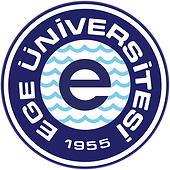Specific delivery of anticancer drugs to the lungs and the brain is still widely explored. The retention of particles in the lumen of lung capillaries has been proposed as a passive targeting approach. However, toxicity derived from the long-term presence of the particles in the lungs have hampered this approach. As for the brain, delivery of therapeutics is limited and controlled by blood-brain barrier, which blocks toxins as well as many essential drugs from reaching brain tissue. The blood-brain barrier also actively functions to exclude substrates from cells through efflux proteins, including ATP-binding cassette transporters and p-glycoprotein.

Therefore, it is of prime importance for our group to develop new strategies by applying techniques related to functionalization and surface modification. We use various approaches such as in-house built microfluidic particle generation platform, sol-gel synthesis and vesicular systems;
- Cancer has become an increasing health problem all over the world. The lack of a definitive treatment for cancer and the increasing incidence of cancer increase the severity of the disease. However, with the advances in medicine, the use of new generation treatment methods in cancer is more promising than traditional methods. Hereby, our group has focused on new methods for the treatment of cancer.

Resveratrol exhibits a potent anti-carcinogenic effect, leading to cell death of cancer cells through different pathways without cytotoxicity to healthy cells. In the strategy we developed, resveratrol was encapsulated with the sol-gel technique using PAMAM. The most efficient form of tetraethylorthosilicate (TEOS) hydrolyzate was formed and characterized with different ratios of PAMAM G-4. The cytotoxicity of resveratrol-loaded silica-PAMAM nanoparticles was investigated in MCF-7 estrogen-dependent, estrogen-independent MDA-MB-231 breast cancer cells and iNOS inhibitory activities (Kececiler-Emir et al., 2021).
- Moreover, propolis exhibits therapeutic properties due to the presence of phenolic acids, esters, and flavonoids. Therefore, our group has developed a study on the encapsulation of propolis with the vesicular system.
The scope of the study was to develop a nano-vesicular formulation and establish a three-dimensional (3D) spheroid model in which lung cancer is recapitulated. In addition when we look at the results, the decrease in cell viability and the scattering in the 3D spheroids of A549 lung cancer cells treated with propolis-loaded niosomes were notable.
Figure at the right side shows us; respectively; empty niosomes; propolis-loaded niosomes; on A549 lung cancer cell spheroids on 3D agar micro tissue mold after live/dead assay on day 3, day 5 and day 7 (Zeiss, 10X, bar scale at 200μm); scattered live/dead cell count of untreated A549 lung cancer cell spheroids day to day.

- Led by Mrs Yesil Celiktas, our group has developed a functionalized polyacrylamide (PAAm)-alginate (Alg) Double Network (DN) hydrogel acting as an articular-like tissue because current implantable materials are limited in function as native tissue and there is still no effective clinical treatment for correcting joint disorders. Hence, we optimized a suitable method to combine TGF-β3 encapsulation and nanoparticle generation in a microfluidic platform, providing monodisperse and uniform synthesis. Herewith, study that our group enhanced considers the current problems in the field of cartilage tissue engineering, and results are expected to contribute for further development in ECM-like constructions. Based on in vivo testing with cartilage defect model, prominent repair capacity of the functionalized PAAm-Alg-NPTGF-β3 hydrogels was observed indicating a significant potential to be used as a cartilage implant in clinical applications by providing chondrogenic differentiation and cell proliferation without excessive inflammation (Saygili et al., 2021).

Schematic diagram of the experimental setup for the formulation of PLGA
nanoparticles by nanoprecipitation method in the microfluidic platform.
- In the development of a next generation of drug nanocarriers and vaccines, further microfluidic design optimization of hydrodynamic flow focusing microfluidic systems and introduction of new 3D microfluidic platforms may contribute to the continuous production of monodispersed nanoparticles having unique internally structural attributes such as cubosomes and hexosomes. We focused on introduction of a simple-by-design commercial microfluidic chip for the continuous production of thymoquinone nanocarriers consisting of a binary lipid mixture of citrem and soy phosphatidylcholine.

Taking into account the reported hemocompatibility and the potential use of these nano-self-assemblies for drug delivery applications, we aimed at introducing a simple method for their continuous production. Consequently, we concluded that the microfluidic approach is more advantageous in terms of particle monodispersity than traditional nanoparticle preparation methods, since the obtained nanoparticles have optimum size than previous studies.
A schematic representation of the used commercial microfluidic hydrodynamic flow
focusing polycarbonate chip.
Briefly, as a research group, we strive to discover innovative solutions as an alternative to the traditional methods used in the treatment of any kind of disease that can cause death and has no effective treatment. In this way, our main aim is to overcome the limiting effect of the body on drug diffusion, to increase the efficiency of drugs that cannot show their effectiveness due to their chemical and physicochemical properties, by facilitating their access to the target tissues, to facilitate the production of currently used drug delivery systems, and to ensure that chemicals that will accumulate in the tissue in the long term and have a toxic effect only interact with the target tissue.
Responsive Drug delivery system


Ege University
Department of Bioengineering
35040 Bornova-Izmir/TURKEY
